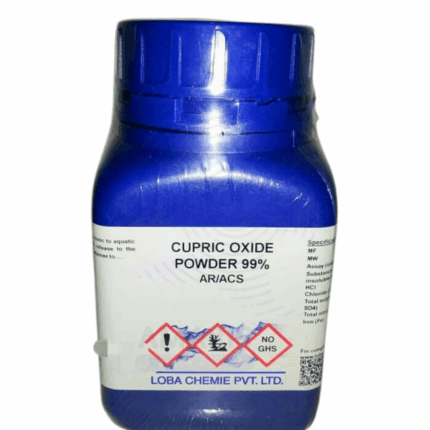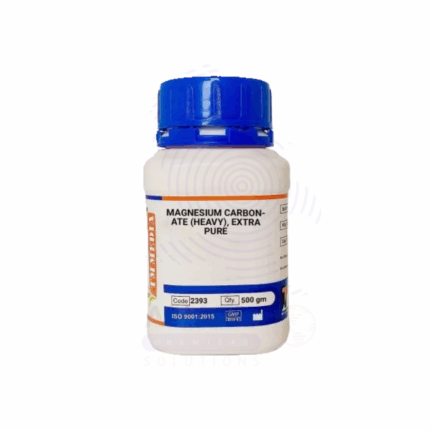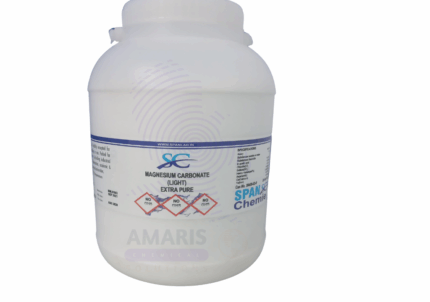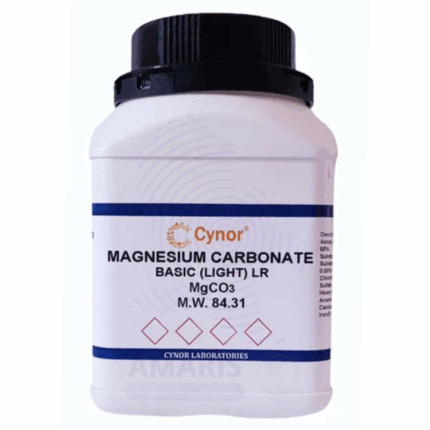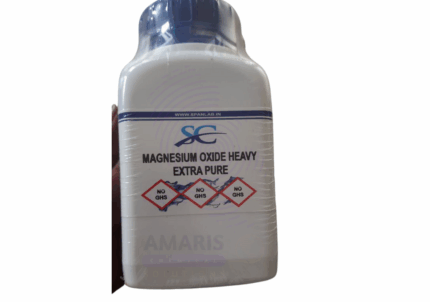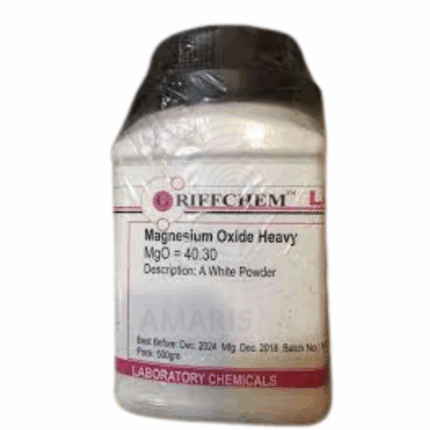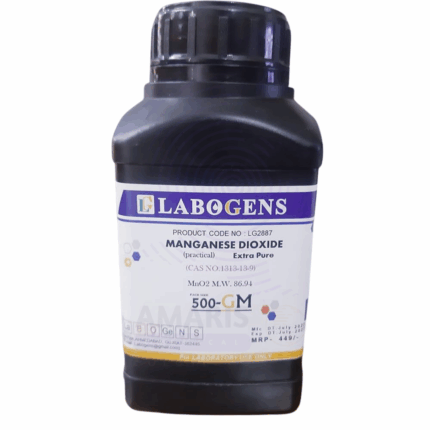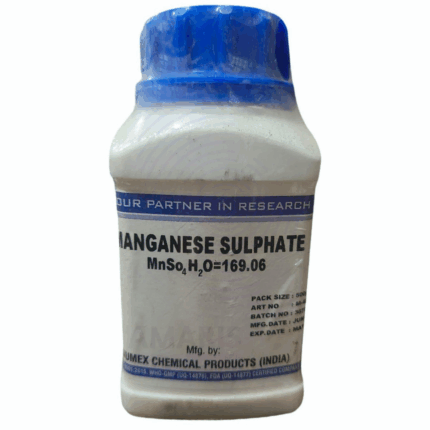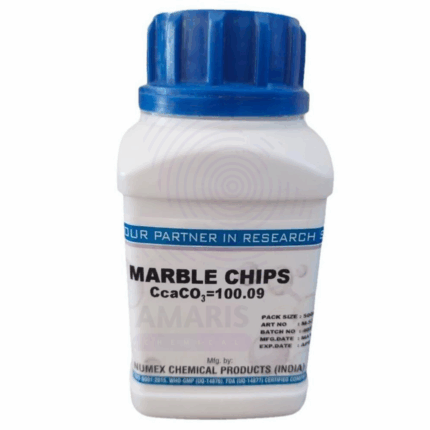
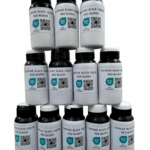
Sudan 3 Solution Extra Pure
$ 35.75 Original price was: $ 35.75.$ 35.63Current price is: $ 35.63.
Sudan 3 Solution Extra Pure is a ready-to-use liquid staining agent containing Sudan 3 dye dissolved in organic solvents. It is widely used in laboratory settings for staining lipids and fats in biological samples for microscopic analysis. The solution provides intense red coloration and is also used in textile dyeing, printing, and cosmetic applications where vibrant red color is required. Due to the solvent content, it is flammable and must be handled with appropriate safety measures. Proper storage in sealed containers, protected from light and heat, ensures stability and effectiveness.
Sudan 3 Solution Extra Pure
PRIMARY USES
- Analytical Reagent & Laboratory Applications:
Used as a staining solution for detecting lipids and fats in biological samples
• Employed in histology and cytology for microscopic examination of tissues
• Utilized in research for qualitative and quantitative lipid analysis
• Applied in forensic science for fingerprint detection through lipid staining - Textile & Dyeing Industry:
Used as a dyeing solution to impart vivid red color to textiles, plastics, and waxes
• Employed for dyeing cellulose-based materials such as paper and fabrics - Cosmetic Industry:
Used as a colorant in cosmetic formulations like lipsticks and nail polishes (subject to regulatory approval) - Printing Industry:
Applied as a pigment solution in inks for printing and coloring applications - Plastics and Polymers:
Used as a coloring agent in polymer production to achieve bright red coloration
Secondary Uses:
- Used in manufacturing colored lacquers, varnishes, candles, and crayons
1. Basic Identification Attributes
- Chemical Name: Sudan 3 Solution
• CAS Number: 85-86-9 (for Sudan 3 powder)
• HS Code: 3204.12.00
• Molecular Formula: C₂₂H₁₆N₄O (Sudan 3)
• Synonyms:
- Solvent Red 23 solution
- CI 26100 solution
2. Physical & Chemical Properties
Physical State: Liquid solution (typically in ethanol or other organic solvents)
• Color & Odor: Deep red solution, faint or no odor
• Melting Point: Not applicable (solution)
• Density: Varies depending on solvent used
• Solubility:
- Sudan 3 is soluble in the solvent used (ethanol, acetone, etc.)
- Insoluble in water in pure form but dispersed in solution
• pH Level: Neutral to slightly acidic depending on solvent and formulation
• Vapor Pressure: Depends on solvent
• Flash Point: Depends on solvent used
• Stability: Stable if stored protected from light and moisture
3. Safety & Hazard Attributes
Hazard Class (GHS Classification):
- Possible carcinogen (Category 2B, IARC Group 2B)
- Skin and eye irritant
• NFPA Ratings: - Health: 2
- Flammability: Depends on solvent
- Reactivity: 0
• Exposure Limits: - No specific OSHA PEL or ACGIH TLV for Sudan 3; solvent limits apply
• Reactivity: - Stable under normal conditions
- Avoid strong oxidizers and acids
4. Storage & Handling Attributes
Storage Conditions:
- Store in tightly closed containers, protected from light and heat
- Keep in a cool, dry, well-ventilated place
• Incompatible Materials: - Strong oxidizers, acids, and bases
• Container Type: - Glass or chemical-resistant plastic bottles with secure lids
• Shelf Life: - Stable for several years if properly stored
• Special Handling Requirements: - Use gloves, safety goggles, and work in well-ventilated areas
- Avoid inhalation of vapors and skin contact
5. Regulatory & Compliance Attributes
Regulatory Status:
- Restricted use in food; permitted for laboratory and industrial applications only
• Transportation Restrictions: - Subject to solvent regulations; handle as flammable liquids if solvent is volatile
• Waste Disposal Method: - Dispose according to local hazardous waste regulations
6. Environmental & Health Impact
Ecotoxicity:
- Toxic to aquatic organisms due to solvent and dye components
• Persistence in Environment: - Poorly biodegradable; persistent in water and soil
• Carcinogenicity/Mutagenicity: - Possible human carcinogen (IARC Group 2B)
• Biodegradability: - Low; environmental accumulation potential
SAFETY PRECAUTIONS
Personal Protective Equipment (PPE):
• Use chemical-resistant gloves (nitrile or neoprene)
• Wear safety goggles or face shield
• Use lab coat or protective clothing
• Work in a fume hood or well-ventilated area to avoid inhaling vapors
Handling:
• Avoid inhalation of vapors and skin contact
• Do not ingest
• Wash hands thoroughly after use
Storage:
• Keep container tightly closed
• Store away from heat, sparks, open flames, and incompatible materials
FIRST AID MEASURES
Inhalation:
• Move to fresh air immediately
• Seek medical attention if respiratory irritation or difficulty occurs
Skin Contact:
• Wash skin with soap and water
• Remove contaminated clothing
• Seek medical attention if irritation persists
Eye Contact:
• Rinse eyes with plenty of water for at least 15 minutes
• Seek medical attention promptly
Ingestion:
• Do not induce vomiting unless directed
• Rinse mouth with water
• Obtain immediate medical care
FIRE FIGHTING MEASURES
Flammability:
• Flammable due to solvent content
Extinguishing Media:
• Use foam, dry chemical, CO₂, or water spray
Hazardous Combustion Products:
• May release carbon monoxide, carbon dioxide, nitrogen oxides, and solvent vapors
Firefighter Protection:
• Use self-contained breathing apparatus (SCBA) and full protective clothing


 Preservatives(food)
Preservatives(food) Flavor Enhancers
Flavor Enhancers Acidulants
Acidulants Sweeteners
Sweeteners Antioxidants
Antioxidants Colorants(food)
Colorants(food) Nutraceutical Ingredients (food)
Nutraceutical Ingredients (food) Nutrient Supplements
Nutrient Supplements Emulsifiers
Emulsifiers
 Collectors
Collectors Dust Suppressants
Dust Suppressants Explosives and Blasting Agents
Explosives and Blasting Agents Flocculants and Coagulants
Flocculants and Coagulants Frothers
Frothers Leaching Agents
Leaching Agents pH Modifiers
pH Modifiers Precious Metal Extraction Agents
Precious Metal Extraction Agents
 Antioxidants(plastic)
Antioxidants(plastic) Colorants (Pigments, Dyes)
Colorants (Pigments, Dyes) Fillers and Reinforcements
Fillers and Reinforcements Flame Retardants
Flame Retardants Monomers
Monomers Plasticizers
Plasticizers Polymerization Initiators
Polymerization Initiators Stabilizers (UV, Heat)
Stabilizers (UV, Heat)
 Antifoaming Agents
Antifoaming Agents Chelating Agents
Chelating Agents Coagulants and Flocculants
Coagulants and Flocculants Corrosion Inhibitors
Corrosion Inhibitors Disinfectants and Biocides
Disinfectants and Biocides Oxidizing Agents
Oxidizing Agents pH Adjusters
pH Adjusters Scale Inhibitors( water)
Scale Inhibitors( water)
 Antioxidants(cosmetic)
Antioxidants(cosmetic) Emollients
Emollients Fragrances and Essential Oils
Fragrances and Essential Oils Humectants
Humectants Preservatives
Preservatives Surfactants(cosmetic)
Surfactants(cosmetic) Thickeners
Thickeners UV Filters
UV Filters
 Fertilizers
Fertilizers Soil Conditioners
Soil Conditioners Plant Growth Regulators
Plant Growth Regulators Animal Feed Additives
Animal Feed Additives Biostimulants
Biostimulants Pesticides (Herbicides, Insecticides, Fungicides)
Pesticides (Herbicides, Insecticides, Fungicides)
 Active Pharmaceutical Ingredients (APIs)
Active Pharmaceutical Ingredients (APIs) Excipients
Excipients Solvents(pharmaceutical)
Solvents(pharmaceutical) Antibiotics
Antibiotics Antiseptics and Disinfectants
Antiseptics and Disinfectants Vaccine Adjuvants
Vaccine Adjuvants Nutraceutical Ingredients (pharmaceutical)
Nutraceutical Ingredients (pharmaceutical) Analgesics & Antipyretics
Analgesics & Antipyretics
 Analytical Reagents
Analytical Reagents Solvents(lab)
Solvents(lab) Chromatography Chemicals
Chromatography Chemicals Spectroscopy Reagents
Spectroscopy Reagents microbiology-and-cell-culture-reagents
microbiology-and-cell-culture-reagents Molecular Biology Reagents
Molecular Biology Reagents Biochemical Reagents
Biochemical Reagents Inorganic and Organic Standards
Inorganic and Organic Standards Laboratory Safety Chemicals
Laboratory Safety Chemicals Specialty Laboratory Chemicals(Special Laboratory Equipment)
Specialty Laboratory Chemicals(Special Laboratory Equipment)
 Demulsifiers
Demulsifiers Hydraulic Fracturing Fluids
Hydraulic Fracturing Fluids Scale Inhibitors(oil)
Scale Inhibitors(oil) Surfactants(oil)
Surfactants(oil) Drilling Fluids
Drilling Fluids
 Dyes and Pigments
Dyes and Pigments Bleaching Agents
Bleaching Agents Softening Agents
Softening Agents Finishing Agents
Finishing Agents Antistatic Agents
Antistatic Agents
 Admixtures
Admixtures Waterproofing Agents
Waterproofing Agents Sealants and Adhesives
Sealants and Adhesives Curing Compounds
Curing Compounds Concrete Repair Chemicals
Concrete Repair Chemicals Anti-Corrosion Coatings
Anti-Corrosion Coatings
 Surfactants(cleaning)
Surfactants(cleaning) Builders
Builders Enzymes
Enzymes Solvents (Cleaning)
Solvents (Cleaning) Fragrances
Fragrances
 Electronic Chemicals
Electronic Chemicals Catalysts
Catalysts Lubricants
Lubricants Photographic Chemicals
Photographic Chemicals Refrigerants
Refrigerants Automotive chemicals
Automotive chemicals Pyrotechnic Chemicals
Pyrotechnic Chemicals
 Biodegradable Surfactants
Biodegradable Surfactants Bio-based Solvents
Bio-based Solvents Renewable Polymers
Renewable Polymers Carbon Capture Chemicals
Carbon Capture Chemicals Wastewater Treatment Chemicals
Wastewater Treatment Chemicals
 Pigments
Pigments Solvents(paint)
Solvents(paint) Specialty Coatings
Specialty Coatings Binders/Resins
Binders/Resins Additives
Additives Driers
Driers Anti-Corrosion Agents
Anti-Corrosion Agents Functional Coatings
Functional Coatings Application-Specific Coatings
Application-Specific Coatings
 Fresh Herbs
Fresh Herbs Ground Spices
Ground Spices Whole Spices
Whole Spices Spice Blends
Spice Blends Dried Herbs
Dried Herbs
 Leavening Agents
Leavening Agents Dough Conditioners
Dough Conditioners Flour Treatments
Flour Treatments Fat Replacers
Fat Replacers Decoratives
Decoratives Preservatives(baking)
Preservatives(baking)
 Plasticizers & Softeners
Plasticizers & Softeners Reinforcing Agents
Reinforcing Agents Adhesion Promoters
Adhesion Promoters Vulcanizing Agents
Vulcanizing Agents Antidegradants
Antidegradants Blowing Agents
Blowing Agents Fillers & Extenders
Fillers & Extenders Accelerators & Retarders
Accelerators & Retarders

